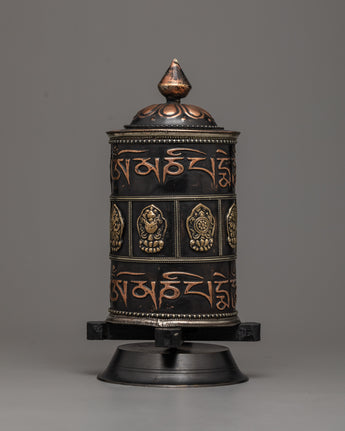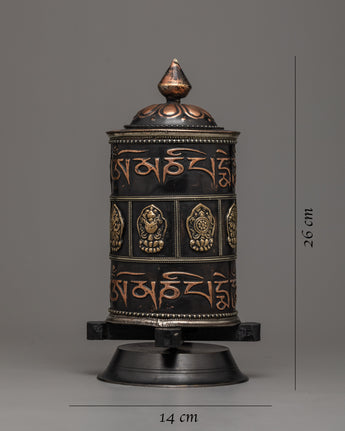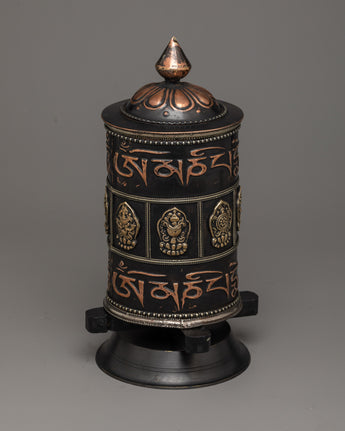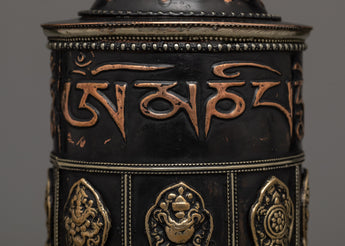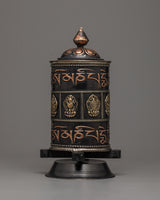
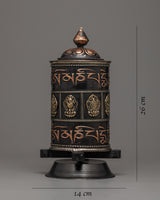
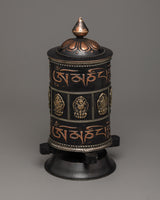
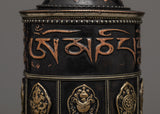
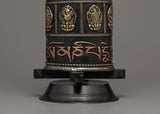
Prayer Wheel Spinner | Handheld Tibetan Mantra Wheel

100% AUTHENTIC

HANDMADE

FREE SHIPPING
Prayer Wheel Spinner
About our Prayer Wheel
Introducing our Prayer Wheel Spinner, which is 26 cm tall and painstakingly crafted by hand from a combination of copper and brass. Every spinner is a living illustration of both spiritual devotion and traditional craftsmanship.
This prayer wheel, which was made with great care and reverence, is evidence of the artisan's talent and commitment. Its design is given a sense of timeless elegance and cultural richness by the combination of brass and copper, which results in an alluring symbol of spiritual practice.
Our Prayer Wheel Spinner brings a touch of holy beauty into any space, whether it is used for meditation or is just exhibited as a decorative item. With the help of this beautifully handmade spinner, you can lose yourself in the calm rhythm of prayer and improve your spiritual state.
Introduction to Prayer Wheel
A prayer wheel is a cylindrical wheel on a spindle used in Tibetan Buddhism. It is typically inscribed with the mantra "Om Mani Padme Hum" and rotated by hand as a form of spiritual practice and to accumulate merit. Spinning the wheel is believed to have the same spiritual benefits as verbally reciting the mantra. The use of prayer wheels is widespread in Tibetan Buddhism and has spread to other cultures.
--------------------------------------------------------
Size: 26 cm(Height) x 14 cm(width)
Weight: 0.63 kg
Material: Copper, Brass
--------------------------------------------------------
How does the Buddhist Prayer Wheel benefit us?
The benefits associated with rotating the wheel are numerous. It promotes knowledge, compassion, and bodhicitta in the practitioner and improves siddhis (spiritual powers such as clairvoyance, precognition, etc.). The practitioner can repeat the mantra as often as possible while the wheel is rolling, maintaining a calm, meditative attitude. A Tibetan Buddhist tradition holds that after a practice session, one should dedicate any acquired merits to the benefit of all sentient beings. Then three times Om Ah Hum. This is usually among Tibetans after finishing any Buddhist practice, including the prayer wheel exercise.

